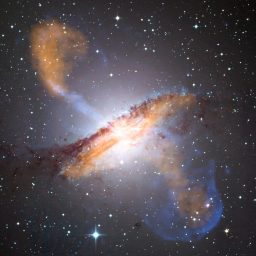Coffee talks
Friday 11/07/2025 @ 11:30, Sala riunioni quarto piano e on-line (meet.google.com/sue-bwvk-axf)
Leonardo Penna (University of Bologna), "FR0s: the faint side of radio-loud AGN"
Accreting supermassive black holes are powerful objects capable of affecting their surroundings via feedback processes that ultimately influence the host galaxy. These systems are known as Active Galactic Nuclei (AGN), and roughly 10% are classified as radio-loud (RL), showing relativistic jets. A new class of RLAGN has recently gained attention within the local Universe (z < 0.1): the Fanaroff–Riley type 0 (FR 0) radio galaxies. These sources are compact, typically hosted by giant red early-type galaxies, and display radiatively inefficient accretion properties typical of low-excitation galaxies. They share many similarities with FR I radio galaxies, including the host properties and their environment, but differ substantially in the lack of extended emission for reasons that are still under debate. This thesis investigates the origin of this compactness by analysing 32 FR 0s from the FR0CAT catalogue compiled by Baldi et al. (2018), using multi-frequency radio data to investigate the properties of the nuclear and extended region. In our study, most FR 0s appear unresolved at sub-kiloparsec scale and dominated by optically thick, self-absorbed cores. Only a minority show steep-spectrum extended emission, but remain highly core dominated, with no clear link to environmental or multi-wavelength AGN properties. Two sources show ultra-steep spectra, possibly tracing remnant jet activity. About 10% of FR 0s may represent young radio galaxies, although flux variability hinders clear confirmation. In conclusion, our analysis suggests that FR 0s form the low-luminosity end of the FR I population, with mildly relativistic jets. The lack of extension may stem from low accretion rates and inefficient jet production, combined with other physical parameters which are difficult to constrain, such as black hole spin and magnetic field strength.

